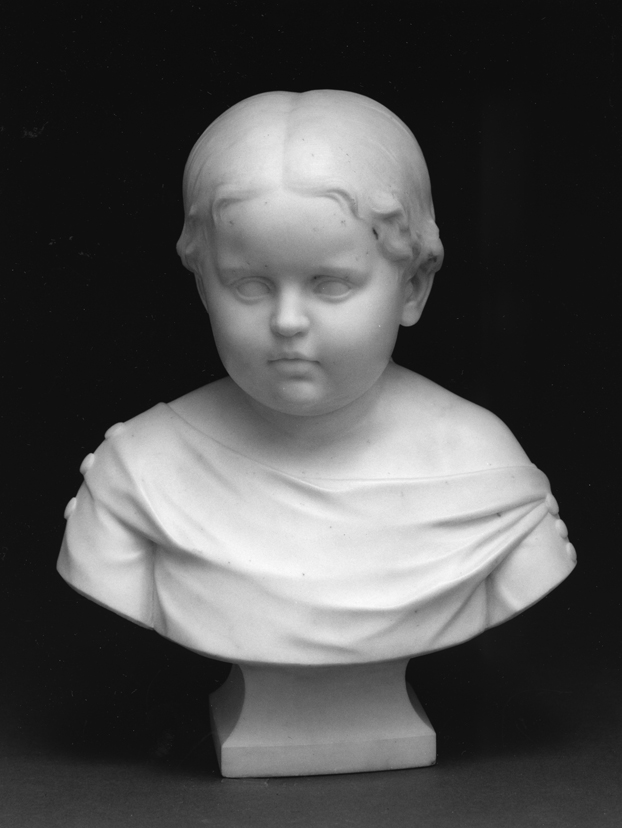
Paradise Lost
Joseph A. Bailly
Born in Paris, Bailly fled his homeland during the 1848 Revolution and after a brief period of sculpture study in London, settled in Philadelphia. The son of a furniture manufacturer, he initially he worked in wood, wax and cameos. In 1854, Bailly and a partner opened a sculpture studio and, by 1860 he was one of the city's leading sculptors, specializing in public and funerary monuments as well as portrait busts. He was a member of the Philadelphia Academicians, a group of artists who advised the Academy on exhibitions and instruction. He also taught at the institution in the late 1860s and in the 1870s. "Paradise Lost," inspired by John Milton's epic poem, and its companion piece, "First Prayer" (also in the collection), depict the aftermath of Adam and Eve's banishment from Eden and the moral instruction of their sons, Cain and Abel. Although Bailly’s handling of the figures appears overly sentimental to the modern viewer, the obvious religious and moral narrative is precisely what appealed to Victorian Americans. The carving of the bodies is quite sensuous, but Bailly concealed enough of the nudity to keep them within the range of contemporary acceptability.
Artist
Date of Birth
(1825-1883)
Date
1863-1868
Medium
Marble
Dimensions
61 x 37 1/2 x 42 in. (154.94 x 95.25 x 106.68 cm.)
Accession #
1892.6.2
Credit Line
Bequest of Henry C. Gibson
Copyright
No known copyright restrictions
Category
Subject
We're so excited you're planning to visit PAFA!
Make time for art — visit us Thursday to Sunday.
Before reserving your tickets, please review helpful information about museum hours, accessibility, building access, and special admission programs.
If you have any questions, feel free to reach out to us at visitorservices@pafa.org — we’d love to help!



